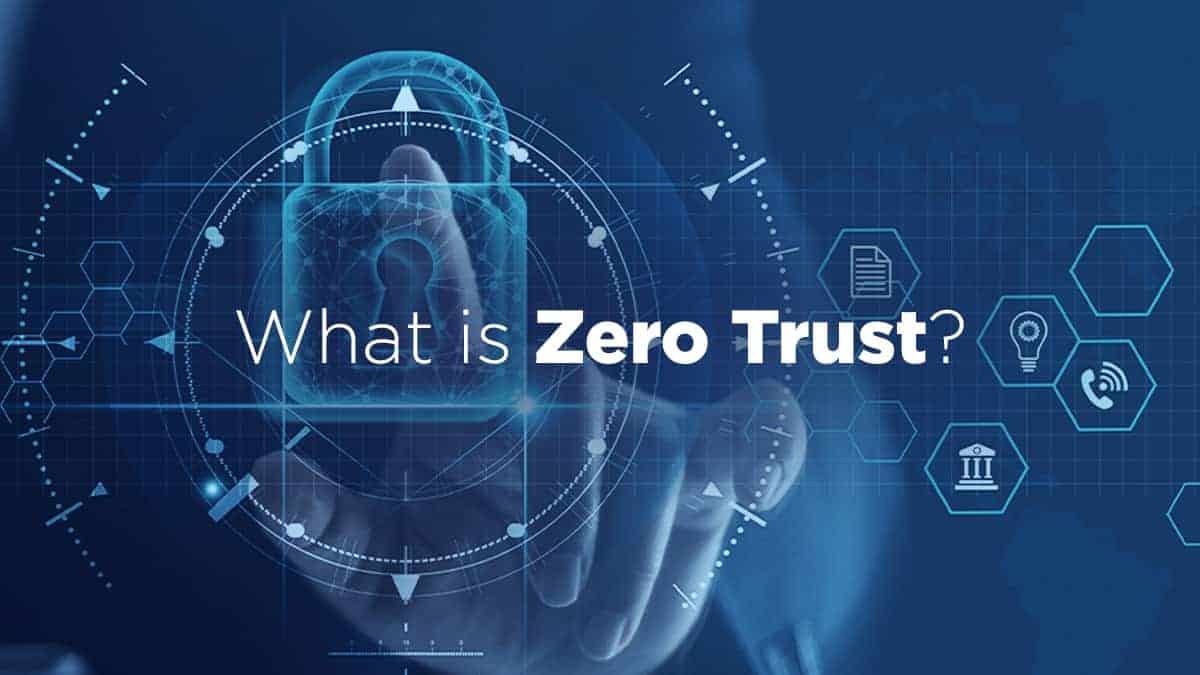

The cybersecurity landscape has fundamentally changed. Traditional "castle and moat" security models, which relied on strong perimeter defenses while trusting everything inside the network, have proven inadequate against modern threats. With 83% of data breaches involving internal networks and remote work becoming permanent for many organizations, the concept of a secure "inside" no longer exists. Zero Trust security architecture has emerged as the definitive answer to these challenges, with organizations implementing Zero Trust reporting 50% fewer security incidents and 43% faster threat detection.
For decades, enterprise security was built on a simple premise: establish a strong perimeter around your network and trust everything inside. This approach worked reasonably well when employees worked from secure offices, applications lived in corporate data centers, and business partners accessed systems through controlled channels. However, digital transformation has shattered these assumptions.
The fundamental flaws in perimeter-based security have become increasingly apparent:
The Disappearing Perimeter: Modern enterprises no longer have clearly defined network boundaries. Cloud services, mobile devices, remote workers, and third-party integrations have created a distributed, borderless IT environment where traditional perimeter controls are ineffective.
Insider Threats and Lateral Movement: Once attackers breach the perimeter, traditional security models provide little protection against lateral movement within the network. Malicious insiders or compromised accounts can access sensitive resources with minimal detection.
Assumption of Trust: The biggest flaw in perimeter security is the assumption that anything inside the network can be trusted. This binary trust model fails to account for compromised devices, malicious insiders, or sophisticated attacks that bypass perimeter controls.
Cloud and Mobile Challenges: Traditional security tools were designed for on-premises environments and struggle to provide consistent protection across cloud services and mobile devices. This creates security gaps that attackers readily exploit.
Zero Trust represents a fundamental shift in security philosophy. Instead of assuming trust based on network location, Zero Trust operates on the principle of "never trust, always verify." Every user, device, and application must be authenticated and authorized before accessing any resource, regardless of their location or previous access history.
Verify Explicitly: Authentication and authorization decisions must be based on all available data points, including user identity, device health, location, application being accessed, and behavioral patterns. No access is granted based on assumptions or previous trust relationships.
Use Least Privilege Access: Users and applications should receive the minimum level of access required to perform their functions. Access rights should be regularly reviewed and adjusted based on changing roles and responsibilities.
Assume Breach: Security architectures must be designed with the assumption that breaches will occur. This means implementing comprehensive monitoring, segmentation, and response capabilities to minimize the impact of successful attacks.
Organizations implementing Zero Trust security report significant improvements in their security posture and business outcomes:
Security Improvements:
Business Benefits:
Identity serves as the foundation of Zero Trust security. Every access request must be authenticated and authorized based on verified identity, regardless of the user's location or device.
Advanced Authentication Methods: Multi-factor authentication becomes mandatory for all users and applications. Biometric authentication, hardware tokens, and behavioral analytics provide additional layers of identity verification beyond traditional passwords.
Dynamic Access Controls: Access decisions are made in real-time based on current context, including user behavior, device posture, location, and risk assessment. Access rights can be dynamically adjusted or revoked based on changing conditions.
Privileged Access Management: Administrative and privileged accounts receive special attention with just-in-time access, session recording, and enhanced monitoring. Privileged access is granted only when needed and automatically revoked after use.
In a Zero Trust model, every device accessing corporate resources must be verified and continuously monitored for security compliance.
Device Trust Verification: Devices must be registered, managed, and continuously assessed for security posture before accessing any resources. This includes corporate-owned devices, personal devices, and IoT devices.
Endpoint Detection and Response: Advanced endpoint protection goes beyond traditional antivirus to provide real-time threat detection, behavioral analysis, and automated response capabilities.
Mobile Device Management: With remote work and BYOD policies, mobile devices require special attention. Mobile device management solutions ensure devices meet security requirements and can be remotely managed or
wiped if compromised.
Zero Trust networks are designed with the assumption that threats exist both inside and outside the traditional perimeter.
Software-Defined Perimeters: Traditional network perimeters are replaced with software-defined perimeters that create secure, encrypted tunnels between users and applications. These perimeters move with users and applications, providing consistent protection regardless of location.
Micro-Segmentation: Network resources are divided into small, isolated segments with granular access controls. This limits lateral movement and contains potential breaches within small network segments.
East-West Traffic Inspection: Unlike traditional security models that focus on north-south traffic (entering and leaving the network), Zero Trust inspects all east-west traffic (moving within the network) to detect and prevent lateral movement.
Data protection in Zero Trust environments goes beyond traditional encryption to include comprehensive data governance and protection strategies.
Data Classification and Labeling: All data must be classified based on sensitivity and business value. Classification drives protection policies and access controls throughout the data lifecycle.
Encryption Everywhere: Data must be encrypted at rest, in transit, and in use. Advanced encryption techniques, including homomorphic encryption and secure multi-party computation, enable processing of encrypted data without exposing sensitive information.
Data Loss Prevention: Advanced DLP solutions monitor data movement and usage patterns to prevent unauthorized access, sharing, or exfiltration of sensitive information.
Applications in Zero Trust environments require comprehensive security measures that go beyond traditional perimeter protection.
Application-Level Authentication: Every application must implement strong authentication and authorization mechanisms. Single sign-on (SSO) solutions provide user convenience while maintaining security.
API Security: With the proliferation of APIs in modern applications, API security becomes critical. This includes authentication, authorization, rate limiting, and monitoring of all API interactions.
Runtime Application Self-Protection: Applications are equipped with built-in security capabilities that can detect and respond to attacks in real-time without relying on external security tools.
Current State Analysis: Conduct comprehensive assessments of existing security infrastructure, identify gaps, and map current data flows and access patterns. This baseline assessment informs the Zero Trust implementation strategy.
Risk Assessment: Identify and prioritize the most critical assets, applications, and data that require protection. Focus initial Zero Trust implementation on high-value, high-risk resources.
Stakeholder Alignment: Secure executive sponsorship and align stakeholders across IT, security, and business units. Zero Trust implementation requires organizational change management and cross-functional collaboration.
Identity Infrastructure: Implement or upgrade identity and access management systems to support advanced authentication, authorization, and user lifecycle management. This includes deploying multi-factor authentication and privileged access management solutions.
Device Management: Deploy endpoint detection and response solutions and establish device registration and compliance policies. Ensure all devices accessing corporate resources meet security requirements.
Network Segmentation: Begin implementing network segmentation and micro-segmentation capabilities. Start with critical assets and gradually expand coverage across the entire network.
Application Assessment: Evaluate all applications for Zero Trust readiness and develop migration plans. Prioritize business-critical applications and those handling sensitive data.
Security Integration: Integrate applications with Zero Trust security services, including authentication, authorization, and monitoring. Implement application-level security controls and API protection.
User Experience Optimization: Ensure Zero Trust implementation doesn't negatively impact user productivity. Implement single sign-on and streamline authentication processes where possible.
Behavioral Analytics: Deploy user and entity behavior analytics (UEBA) to detect anomalous activities and potential threats. Use machine learning to improve threat detection accuracy and reduce false positives.
Automated Response: Implement automated incident response capabilities that can quickly contain and remediate security threats. This includes automated account lockouts, device isolation, and access revocation.
Continuous Monitoring: Establish comprehensive monitoring and logging across all Zero Trust components. Implement security information and event management (SIEM) solutions to correlate events and detect complex attacks.
Zero Trust implementation involves complex technical integration across multiple systems and platforms. Organizations must carefully plan integration points and ensure compatibility between different security tools.
Mitigation Strategies: Start with pilot implementations to test integration and identify potential issues. Work with experienced partners who have deep Zero Trust implementation expertise. Implement changes gradually to minimize disruption.
Poorly implemented Zero Trust can negatively impact user productivity through excessive authentication prompts and access restrictions.
User Experience Optimization: Implement intelligent authentication that adapts to user behavior and risk levels. Use single sign-on to reduce authentication friction. Provide clear communication and training to help users understand new security requirements.
Many organizations have legacy systems that weren't designed for Zero Trust architectures. These systems may lack modern authentication capabilities or API interfaces.
Legacy Integration Approaches: Implement proxy solutions that can add Zero Trust capabilities to legacy systems. Consider application modernization for critical legacy systems. Use network-level controls where application-level integration isn't possible.
Zero Trust implementation requires significant investment in technology, training, and organizational change management.
Cost Optimization Strategies: Implement Zero Trust in phases to spread costs over time. Focus on high-value, high-risk areas first to demonstrate ROI. Consider managed security services to reduce internal resource requirements.
Incident Reduction: Track the number and severity of security incidents before and after Zero Trust implementation. Successful implementations typically see 40-60% reductions in security incidents.
Detection and Response Times: Measure improvements in threat detection speed and incident response times. Zero Trust architectures typically improve detection times by 30-50%.
Compliance Improvements: Monitor compliance audit results and regulatory violation incidents. Zero Trust implementations often result in significant compliance improvements.
User Productivity: Measure the impact of Zero Trust on user productivity and satisfaction. Well-implemented Zero Trust should improve or maintain productivity levels.
Application Performance: Monitor application performance and availability to ensure Zero Trust security controls don't negatively impact business operations.
Cost Effectiveness: Track the total cost of ownership for security infrastructure and compare it to the value delivered through improved security posture.
Zero Trust security continues to evolve with advances in artificial intelligence, machine learning, and cloud technologies. Future developments will likely include:
AI-Powered Security: Artificial intelligence will play an increasingly important role in Zero Trust implementations, providing more sophisticated threat detection, automated response, and adaptive security controls.
Cloud-Native Zero Trust: As organizations continue migrating to cloud environments, Zero Trust architectures will become more cloud-native, leveraging cloud provider security services and capabilities.
IoT and Edge Security: The proliferation of IoT devices and edge computing will drive new Zero Trust capabilities designed specifically for these environments.
Zero Trust security represents the future of enterprise cybersecurity. Organizations that embrace Zero Trust principles will be better positioned to protect against modern threats while enabling business agility and growth.
The journey to Zero Trust requires careful planning, significant investment, and organizational commitment. However, the security and business benefits make it one of the most important investments organizations can make in their cybersecurity posture.
Success requires more than just technology implementation. Organizations must also address cultural change, user training, and process optimization to realize the full benefits of Zero Trust security.
With proper planning, expert guidance, and phased implementation, any organization can successfully transition to Zero Trust security and achieve significant improvements in their security posture and business outcomes.